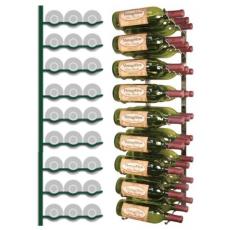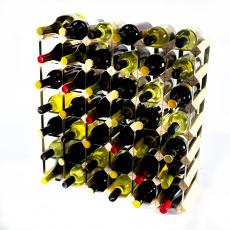Beginners’ Guide to Racking Wine
If you’re someone with an abundance of wine shelving units to cater to your home wine storage needs, you may find yourself needing to rack wine. This is particularly true of homemade wine, which will often require racking whenever it needs to be moved. Wondering “how do you store wine?” is only the beginning when it comes to fermenting it yourself. The process of racking wine involves the separation of new wine from its sediment by transporting it from one vessel to another. The equipment for this uses gravity alone, making it a more delicate process than the use of a pump. Though this is referred to as wine racking, this term can cause confusion since a wine rack is a storage solution. Despite this, wine racking goes beyond storage and is imperative to the preservation and clarity of your wine. Get the Proper Racking Equipment First thing’s first, you’ll need to get your hands on some simple tools, each of which are included in standard wine rack kits. These include a minimum of two carboys; however, if you can’t access proper carboys, a pair of sterilised buckets will suffice. In addition to these, you’ll also need a siphon tube, as well as an airlock cap. Sterilise the Siphon Tube with Meta Solution Once you’ve attained your equipment, you’ll need to prepare it for the racking process by ensuring that everything is sterile. In order to sterilise the siphon tube, you should dilute either a tablespoon of sodium metabisulphite or potassium metabisulphite in around 4.5 litres of water. This will create a “meta solution” that will need to be applied to everything the wine is set to touch. Meta solution can be rather harsh, meaning you may want to use it in an area with good ventilation. Similarly, it’s a good idea to wear disposable gloves and breathing protection. Following the directions on the packaging is imperative for safety. Place the Wine You’re Intending to Rack on a Higher Surface In order to get gravity to do its job, the wine you’re intending to rack will need to be placed on a lifted surface. Typically, people place their filled vessel on the kitchen table whilst their empty vessel will sit on the kitchen floor. However, if you do opt for this method, you’ll need to ensure that your siphon tube is long enough to stretch between the two vessels. Place the Siphon into the Carboys When everything is in position, you can remove the lid from the full carboy, ready for the siphon tube to be inserted via the notched end. As you feed the tube into the carboy, it’s imperative that you don’t allow it to touch the sediment at the bottom of the vessel. This line of sediment should be relatively apparent by the time the wine is ready to be racked. You’ll be able to distinguish it by a darker colour and a cloudier texture compared to the rest of the wine. Once you’ve allowed your tube to fall one or two inches above the sediment line, you can then feed the other end of the siphon into the clean carboy. Begin Siphoning the Wine In order to get gravity to do its job, you’ll likely need to get the siphoning process started by sucking on the end of the tube. You should do this until you feel the wine flow and then quickly transfer the tube into the carboy before the wine is able to reach your mouth. The aim of the game is to create a quiet flow whilst ensuring that the sediment at the bottom isn’t being disturbed. Similarly, it’s important to ensure that the tubes aren’t splashing around as this can put unnecessary oxygen into the wine. You’ll need to be on hand to clamp the tube in the instance that the second vessel fills, or the sediment begins to flow. Cap the Filled Carboy with an Airlock Each airlock is different, so you’ll need to follow the instructions to properly implement it. However, as a rule of thumb, you’ll need to securely screw the top on before clamping it down. Typically, you’ll simply need to plug the cap into the top of the carboy and your newly racked wine will be all ready for storage. Order a Cranville Wine Rack After you’ve racked all this wine, you’ll understandably need somewhere to store it. This is where Cranville Wine Racks comes in. Please get in touch to learn more about our wine storage solutions.Visit the Cranville Wine Racks website for more information on Beginners’ Guide to Racking Wine






